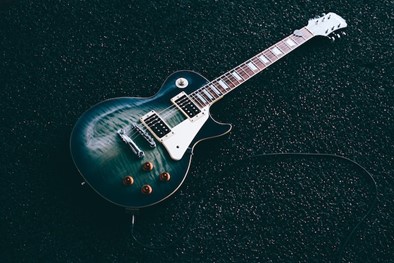Rock vs. Metal: Navigating the Distinct Styles of Guitar Playing
The world of guitar playing is a vast and diverse realm, offering a wide range of styles and genres to explore. Among the most prominent are rock and metal, each with its own unique characteristics and techniques. Gerard Zappa Wooster delves into the differences between rock and metal guitar playing, shedding light on the various aspects that define these two iconic styles.
Techniques in Rock Guitar
Rock guitar playing is characterized by its versatility and emphasis on groove and melody. Here are some key techniques commonly associated with rock guitarists:
Power Chords: Rock guitarists often rely on power chords, which are simple two-note chords that provide a powerful and aggressive sound. These chords are foundational in many rock anthems.
Bending and Vibrato: Expressive techniques like bending and vibrato are crucial in rock music. Bending involves manipulating the pitch of a note by pushing or pulling the string, while vibrato adds a dynamic and expressive quality to sustained notes.
Strumming Patterns: Rock guitarists use a variety of strumming patterns to create rhythmic interest and drive in their playing. This can range from steady, even strumming to syncopated patterns for added flair.
Scale Play: Rock guitarists commonly use pentatonic scales and modes to craft memorable solos and melodic lines. These scales provide a foundation for improvisation and lead playing.
Tones and Styles in Rock Music
The tone in rock music often varies depending on the subgenre or specific style. For instance:
- Classic rock guitarists often seek warm, vintage tones reminiscent of the 60s and 70s. They may use tube amplifiers and analog effects to achieve this timeless sound.
- In hard rock, guitarists aim for a more aggressive and powerful tone. Distortion and overdrive effects are prominent, providing a saturated and crunchy sound.
- Blues rock guitarists focus on emotive playing and soulful tones. They often use clean or slightly overdriven settings to allow the nuances of their playing to shine through.
Techniques in Metal Guitar Playing
Metal guitar playing is characterized by its high level of technicality and precision. Here are some techniques commonly associated with metal guitarists:
- Shredding: Metal guitarists are known for their lightning-fast, virtuosic playing. Shredding involves rapid picking, sweeping, and legato techniques, creating a blistering and intricate sound.
- Palm Muting: Metal guitarists frequently employ palm muting to create a tight, percussive sound. This technique involves lightly resting the palm of the picking hand on the strings near the bridge.
- Alternate Picking: Precise alternate picking is essential in metal playing. This technique ensures that each note is articulated clearly, even in fast-paced passages.

Tones and Styles in Metal Guitar
Metal guitar tones are typically characterized by their high gain and aggression. Here are some subgenres and their associated tones:
- Thrash metal guitarists often favor tight, punchy tones with a pronounced midrange. This allows for articulate riffing and aggressive palm muting.
- Death metal guitar tones are characterized by their extreme levels of gain, creating a dense and heavy sound. Down-tuning is common to achieve a deep and powerful resonance.
- Progressive metal guitarists may use a wide range of tones, often incorporating clean and ambient textures alongside heavily distorted sections. This genre embraces experimentation with various effects and tonal textures.
Conclusion
Rock and metal guitar playing represent two distinct yet interconnected branches of the guitar world. While both share a foundation in technique and musicality, they diverge in their emphasis on different playing styles, tones, and approaches. Understanding these differences allows guitarists to navigate between these dynamic styles, broadening their musical horizons and enhancing their playing versatility.


